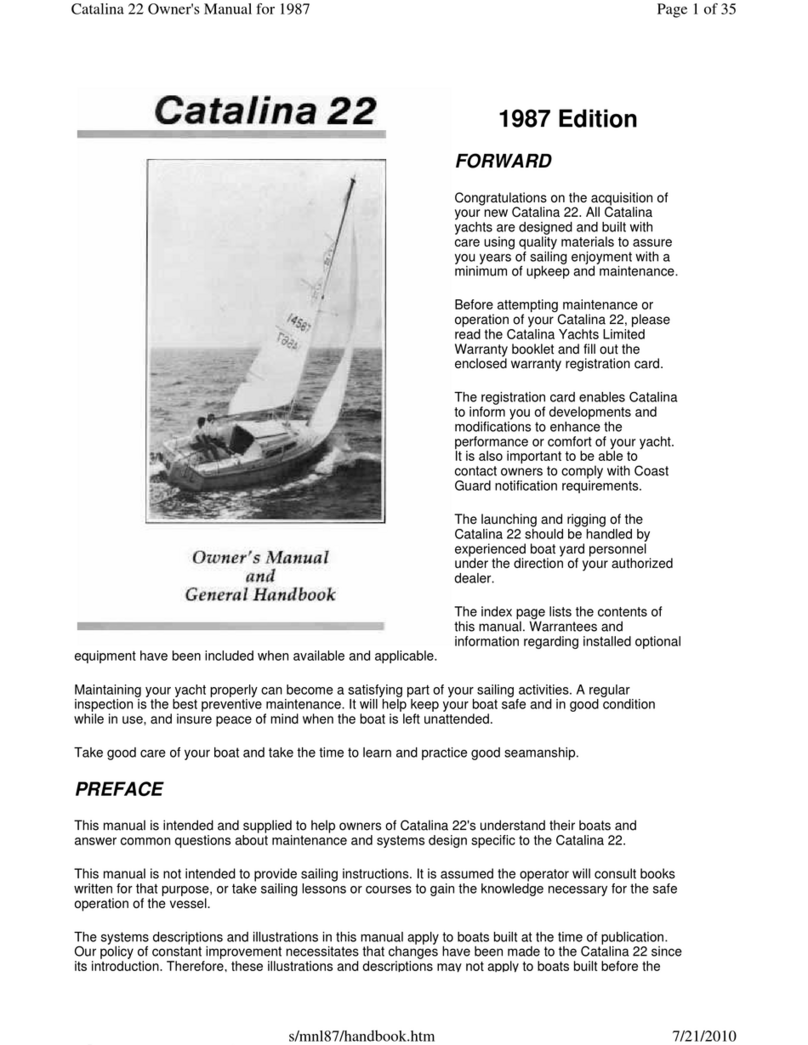
4
Revision Date: 4/7/12
TABLE OF CONTENTS
I. VESSEL DESCRIPTION/SPECIFICATIONS…………..........................................................................
II. VESSEL OPERATON................................................................................................................................ 5
A. ENGINE................................................................................................................................................ 5
Engine Inspection.................................................................................................................................. 5
Startup................................................................................................................................................... 6
Shifting.................................................................................................................................................. 7
Shutdown .............................................................................................................................................. 7
Fueling Up ............................................................................................................................................ 7
Trouble Shooting Engine Problems...................................................................................................... 7
B. GETTING UNDERWAY ..................................................................................................................... 8
C. DINGHY ............................................................................................................................................... 9
D. DOCKING ............................................................................................................................................ 9
E. MOORING CANS (BUOYS) ............................................................................................................. 10
F. ANCHORING ..................................................................................................................................... 10
III. VESSEL SYSTEMS................................................................................................................................ 10
A. ELECTRICAL SYSTEMS ................................................................................................................. 10
110-Volt AC System........................................................................................................................... 10
12 Volt DC System ............................................................................................................................. 11
Troubleshooting Electrical Systems ................................................................................................... 12
B. SANITATION SYSTEM.................................................................................................................... 12
Marine Head (toilet)............................................................................................................................ 12
Holding Tank ...................................................................................................................................... 12
C. WATER SYSTEM.............................................................................................................................. 13
Fresh Water Tank................................................................................................................................ 13
Fresh Water Pump............................................................................................................................... 13
Water Heater ....................................................................................................................................... 13
Shower ................................................................................................................................................ 14
D. GALLEY SYSTEMS.......................................................................................................................... 14
Propane Stove/Oven............................................................................................................................ 14
Refrigeration ....................................................................................................................................... 15
Barbeque ............................................................................................................................................. 15
E. HEATING SYSTEMS........................................................................................................................ 15
Forced Air Diesel Furnace.................................................................................................................. 15
Space Heater (110 Volt AC) ............................................................................................................... 15
F. ELECTRONICS SYSTEMS ............................................................................................................... 15
VHF Radio .......................................................................................................................................... 16
Depth Sounder/Knot Meter/Wind Speed............................................................................................ 16
Global Positioning System (GPS)....................................................................................................... 16
Autopilot ............................................................................................................................................. 16
AM/FM Stereo Radio – CD Player..................................................................................................... 16
G. BILGE PUMPS................................................................................................................................... 17




























